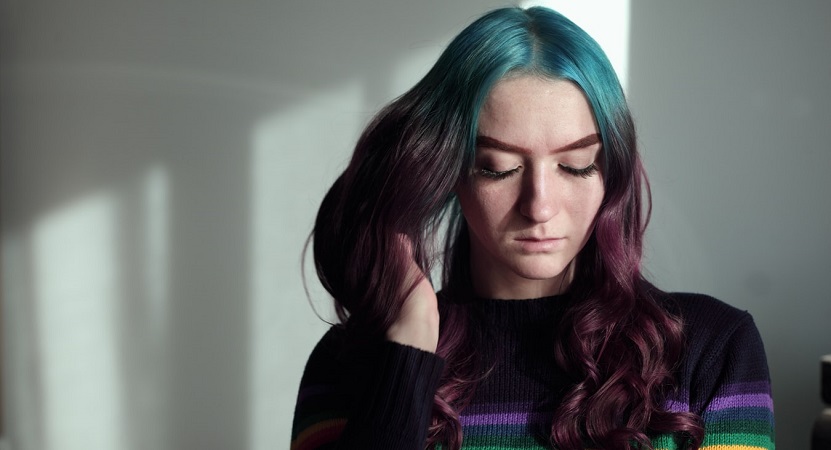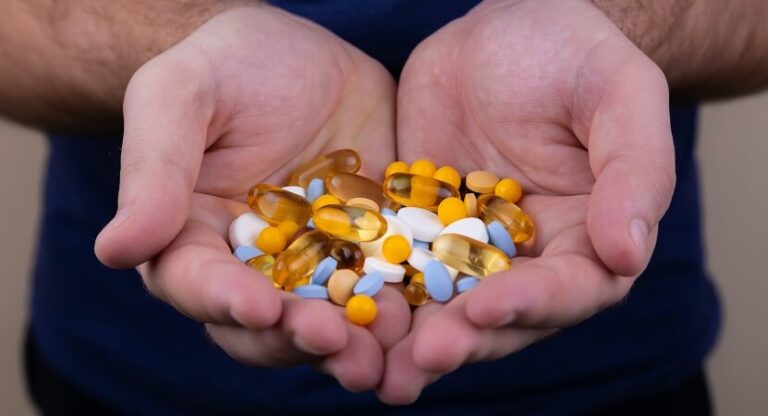Nothing says ‘fresh start, new me’ quite like a drastic change in hair color. Psychologists have even linked the act of hair coloring to the mind’s addiction to being rewarded; successful dyeing is a reward we can give ourselves regularly. The chemicals, however, in ordinary hair dye or hair color are sometimes the antithesis of a reward when absorbed by the human body. Natural hair dye is where it’s at — here is everything you need to know!
In this article we discuss the following:
- What is Natural Hair Dye?
- Organic vs Vegan Hair Dye
- Ingredients to Avoid in Ordinary Hair Dye
- Why Should I Use Natural Hair Dye?
- Best Natural Hair Dye on the Market
- DIY: Make Natural Hair Dye at Home
What is Natural Hair Dye?
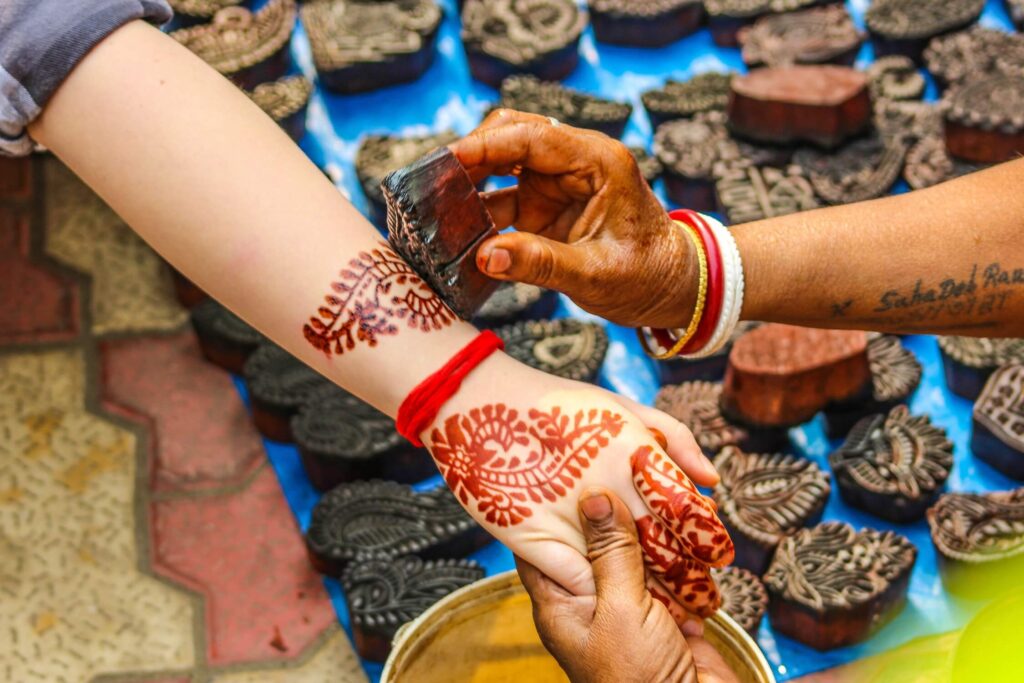
Have you ever taken a moment to consider how intense the chemicals in hair dye have to be in order to permanently bind a new color to each hair follicle? It’s astounding when you really get into it, and more and more people are starting to question the need for such toxic exposure on a regular basis.
As with all beauty and self-care products, there are always equivalents found in nature. The industries are expanding at a rapid pace, so much so that we now have access to everything from all natural face and body lotions and even natural dry shampoos.
Natural hair dye is just that; a natural, chemical-free way to alter the shade of one’s hair either temporarily or semi-permanently.
Non toxic hair dye makes complete sense when you start to consider the fact that most dyes used to manufacture clothing are derived solely from plants. Seaweed, berries and even carrots give off vibrant colors that absorb easily into fabric. So why don’t we use these gentle plants on our hair?
There are many natural ways to dye hair, however using a paste of red berries as hair dye might not be as effective as when used on fabric. Because our scalps release so much natural oil on a daily basis, certain plant dyes struggle to bind to the hair. It takes some of the more potent and acidic plants to form an effective, lasting hair dye that isn’t too affected by the scalp oils.
Henna hair dye has existed in the traditions of India, Pakistan, Africa and the Middle East for around 9,000 years. It’s an ancient plant based dye derived from the henna tree, also known as the Lawsonia inermis.
Traditionally we’ve seen henna used commonly as a body dye, particularly in Indian ceremonies and celebrations. Henna is actually a powerful permanent dye for hair and one of many natural hair dyes without chemicals. How long does henna hair dye last? Up to 6 weeks at its most vibrant, and after this it will begin to dull.
Henna is just one natural hair dye option. Beet juice hair dye and coffee hair dye are found in the home and can be made quite inexpensively. If you know what ingredients to use and have a basic understanding of measuring and mixing, you’re well on your way to being your own supplier of hair dye for the foreseeable future.
Organic vs Vegan Hair Dye
All natural beauty and self-care products have the option of either being organic or cruelty free. It’s important to note that neither of these are required, and some hair dyes can be totally natural, without being vegan or organically derived.
Natural hair dyes are always made up of botanically based ingredients. As we know, botanics that grow around the world require strict monitoring and testing before they can be classified as organic.
For a natural hair dye to proclaim itself as such, its formula would have to be a compound of all certified organic ingredients that were grown without the use of chemical pesticides, steroids or GMO. The choice to do so would be at the mercy of the brand in question and their personal ethics regarding organic farming.
When looking to switch to a natural hair dye, organic is absolutely the way to go. They tend to make the best natural hair dye as there are no traces of harmful chemicals to put your body at risk should they be absorbed through the skin of your scalp.
Likewise, any individuals who make a point of living cruelty free can seek out a natural hair dye with the vegan stamp of approval. In order to be classified as vegan, a hair dye would need to guarantee that no animals or animal byproducts (such as beeswax) are used in the making of their formula. What’s more, they would need to have tested their hair dye on actual human beings and not on animals being held captive.
Because of the nature of hair dye, it’s common for manufacturers to test their products on animals with long hair or fur, such as rabbits, horses, and even dogs. It gives them an accurate estimate of what might occur on human hair, and allows them to assess any potential side effects. Unfortunately these animals get burnt, blistered, skinned and even killed in the process.
Using cruelty free products is something we can all make a point to support. To know if a natural hair dye is cruelty free or not, simply inspect the packaging for the ‘V’ or leaping bunny logo of certification.
Ingredients to Avoid in Ordinary Hair Dye
As consumers, we all need to do our part to help shed light on product ingredients that never were never intended for our well being. Big brand names care about one thing and one thing only: profits. If this means cutting corners and saturating products with harmful chemicals, so be it.
It becomes our responsibility to read up and educate ourselves on the obscure words plastered down the side of most ordinary self-care products. As a general rule, if you can’t pronounce an ingredient, you probably don’t want it entering into your bloodstream. Also, it’s a major red flag that pregnant women are not advised not to use ordinary hair dye during pregnancy due to the risks involved when these chemicals are absorbed.
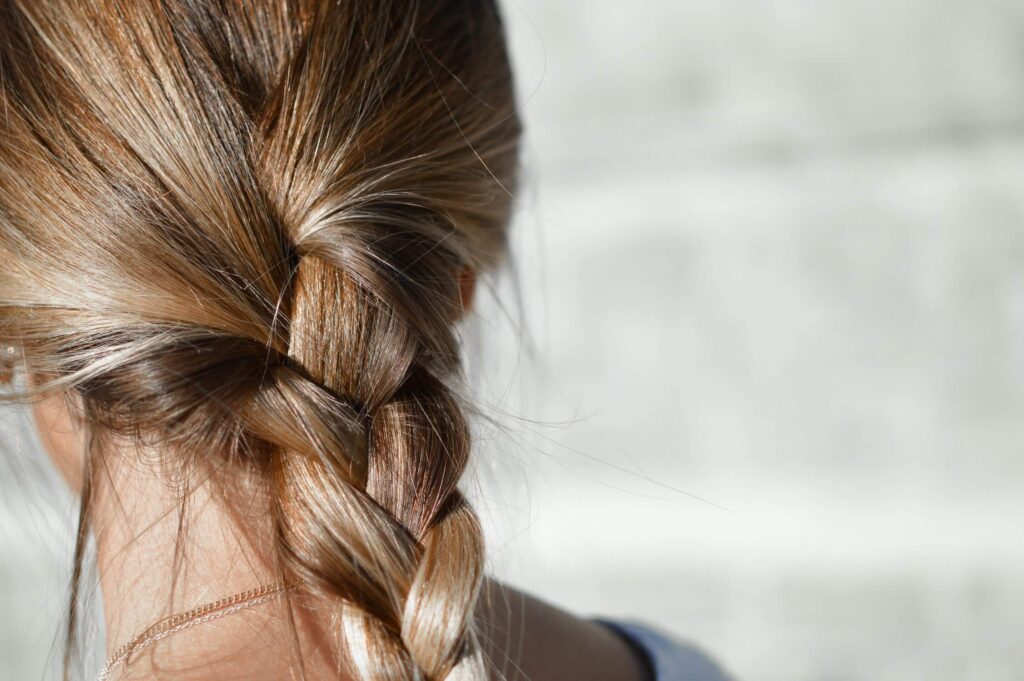
Here are some of the toxins you need to look out for in ordinary hair dyes:
Ammonia
Containing no ammonia is something that ordinary hair dyes began proudly proclaiming a few years back. This came after the dangers of ammonia were brought to public light and people started to demand more thoughtful, safe dyes to use on their heads.
Ammonia is the agent that opens up the individual hair follicles so that the color may embed itself within. It was proven that ammonia causes caustic burns and lung irritation in just about everyone who comes in contact with it.
Choosing the box that reads “no ammonia” became the equivalent of choosing the least damaging hair dye on the shelf. Little did we know that inside said box are other toxins that make ammonia look like a holiday.
Para-Phenylenediamine
Para-Phenylenediamine, or PPD, is how big brands get their darkest shades of dye. This is a chemical derived from coal tar, and it contains high amounts of benzene, naphthalene, phenols and aniline.
When combined with hydrogen peroxide, a common ingredient in hair dyes, PPD becomes extremely reactive and can easily mutate cells, leading to cancer.
Hydrogen Peroxide
Hydrogen peroxide is not innocent, either. This ingredient is the agent that is responsible for stripping your natural color from your hair so that the new one can take over.
It’s a potent substance that reduces each hair follicle to a fraction of its strength and thickness with each encounter. Hair is noticeably dry and brittle when dying is complete, which is why hairdressers coat it in further chemical treatments to give the illusion of health. It’s a vicious cycle.
Parabens
It was also a few years ago when extensive research into the nature and effect of parabens was brought to light by the science community. Since then, our shelves have been filled with self-care products that proudly announce their “paraben free” nature to the world.
Unfortunately, it is not possible for chemical hair dyes to be free of parabens. They require extensive shelf life and need to go months, even years, without rotting from the inside. Parabens are used to preserve existing ingredients and prevent them from forming natural habitats of their own.
In hair dye, the two most commonly used parabens are methylparabens and propylparabens. Both have been shown to induce allergies in adults who never had allergies prior and promote heavy skin irritation as well as respiratory issues.
DMDM Hydantoin
DMDM hydantoin is how hair dyes manage to slowly release formaldehyde into themselves over long periods on the shelf. This too is a preservative, and its role is to fight off bacteria that might be trying to live in the dye.
When absorbed into the bloodstream, DMDM hydantoin can bring about a number of health ailments including significant decay of the immune system.
Lead Acetate
Lead acetate is perhaps the most alarming of toxins found in ordinary hair dyes. It’s used in almost all darker shades of dye and acts as a color additive.
Lead acetate has been repeatedly linked to induction of neurological disorders in teens and adults. It also has the power to make a person anemic over long periods of use.
Why Should I Use Natural Hair Dye?
We always remind our readers to keep in mind that absorption through skin is the most direct way to enter the bloodstream without physically cutting through it. This means that what we put onto our skin, be it the scalp, face, or body, can and will find its way into the core of our systems.
The skin on one’s scalp is noticeably thinner than elsewhere on the body. There is little flesh to stand in the way of all of the above chemicals being absorbed directly through the scalp and into the brain, followed by the rest of the body.
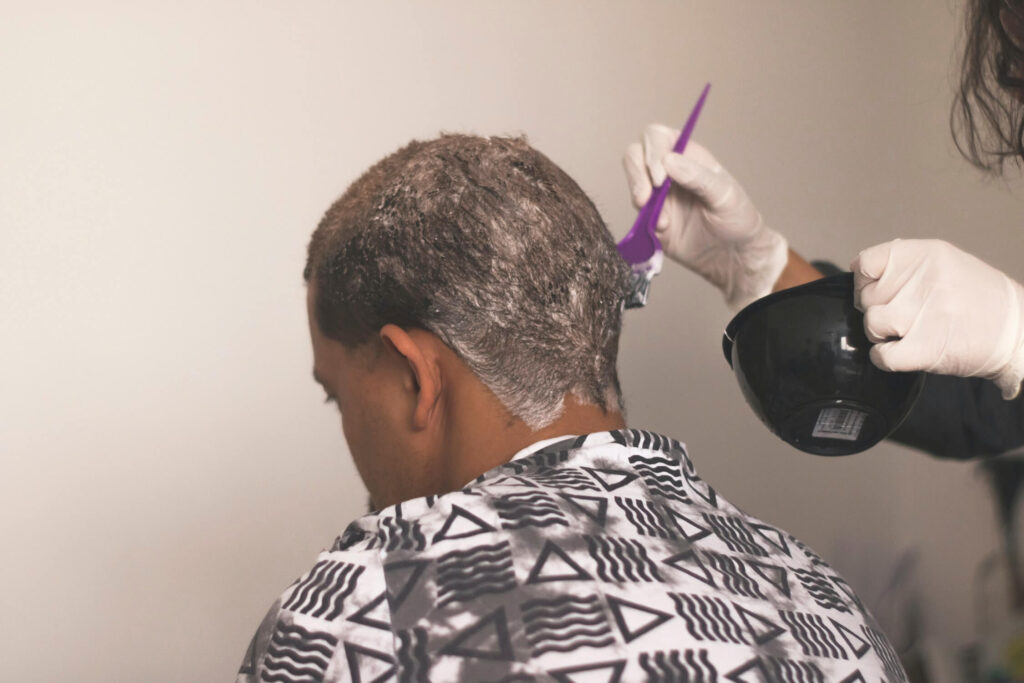
Switching to a natural hair dye means you eliminate all contact with the aforementioned harmful chemicals. You’ll achieve your desired results, without the risk of long term damage to your health.
The manufacturing process of chemical hair dyes is also a harmful practice on the environment. The beauty industry has a massive carbon footprint as a result of the many factories and relative emissions around the world.
Supporting a small brand making a natural product usually means that said brand has more of an ethical production process and, as a result, less of an impact on the environment.
Some debate the monetary costs of supporting small businesses over sticking to big brands. Sometimes natural beauty products cost a lot more than drugstore products because the production processes are not as expedited and sourcing of organic botanicals can be expensive. Luckily, hair dye is one industry where going natural is actually cheaper than purchasing chemicals!
Another reason to make the move to chemical free hair dye is the cruelty free aspect. If you’re an animal lover, it should unsettle you that rabbits, dogs and other furry animals are being burnt alive just to ensure your hair dye is ready to be put on a public shelf. It is not necessary to consume this way any longer — natural hair dyes give you the same desired result without the side of torture.
Finally, if there’s any good reason to use natural hair dye it’s that your hair will absolutely love it. We tend to only realize how damaging chemical products have been on our hair after we make the switch to something more healthy.
Brittle, easily broken hair will become a thing of the past. New hairs will begin to sprout, and gradually your head will become more full of volume, nourishment and hydration. Since our hair is an important energetic hub for the rest of the body, making better choices in what we put it through, simply for aesthetics, is of the utmost importance.
Lest we forget the biggest perk of using natural hair dye over synthetic — making homemade hair dye from goods you’ll find in your pantry!
- diy hair dye
- dye hair with coffee
- how to make red hair dye with household items
- coffee and coconut oil hair dye
- how to cover grey hair with coffee
- coffee hair dye paste
Best Natural Hair Dye on the Market
So what is the healthiest hair dye on the market? Well, you have a lot of options to choose from. There are natural hair dyes that mix and apply the same way chemical hair dyes do and then there are natural hair dyes, like henna, where the application process is slightly more informal.
Natural hair dye brands will always proudly disclose if they are vegan and/or cruelty free. If these are important factors for you, keep an eye out for the brand that caters to your personal ethics.
Something else to keep in mind is that there are many big name brands of chemical hair dye who have been in the public eye for years. Seeing the global movement toward more natural, sustainable means of self-care, some of these big name brands did what they could to move into more natural formulas.
While few of them can classify themselves as 100% natural, most sit at around the 80% mark, and don’t include an ammonia — which is always a step in the right direction.
1. Clairol Natural Instincts Semi-Permanent Hair Color
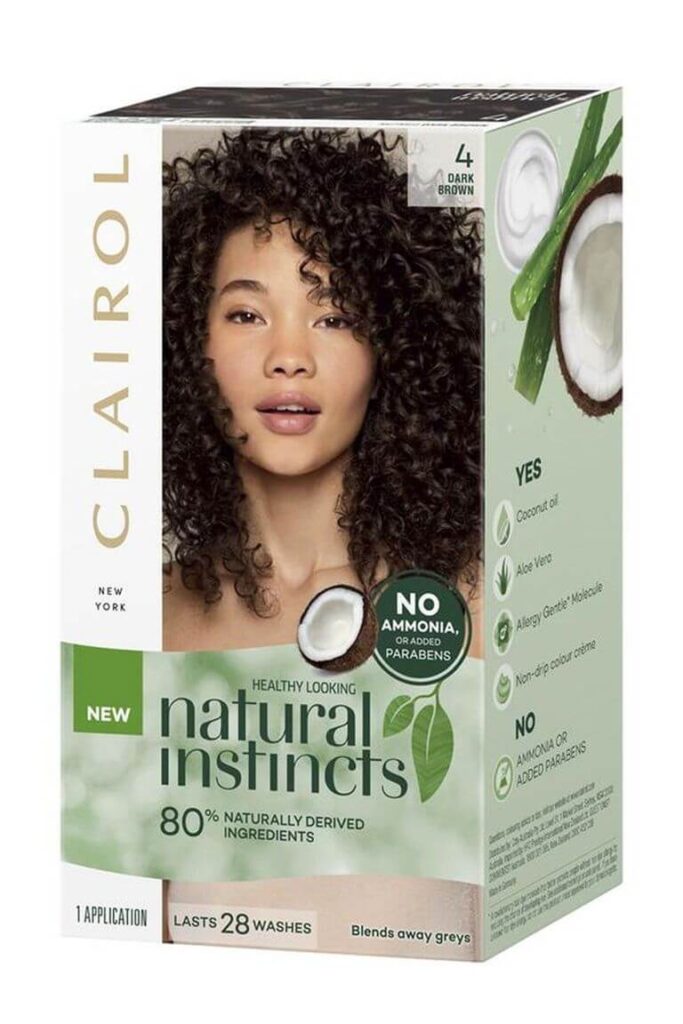
Clairol is one of the bigger brands who have made a strong effort to offer customers more natural hair dye within their existing ranges. They’ve managed to get their Natural Instincts selection to 80% natural capacity.
They’ve removed all ammonia, making this one of the least damaging box hair dyes out there. There are 37 impressive shades to choose from, offering a broad spectrum of semi-permanent coverage.
The editor-in-chief at The Fashiongton Post loves this hair dye because of its ammonia- and paraben-free formula and long lasting effect (often lasting for over 27 washes!).
2. Matrix Biolage Hair Color
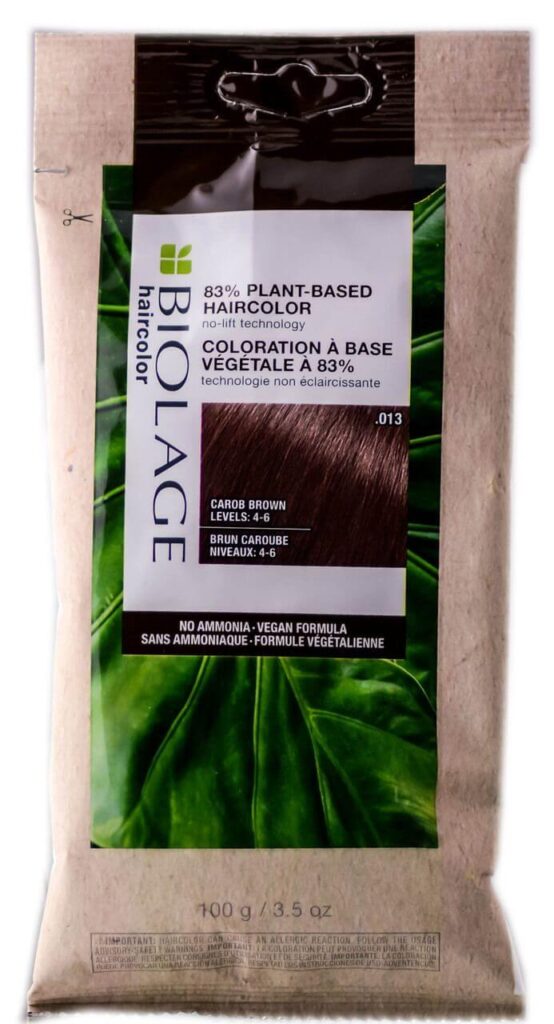
If you’re looking for a chemical free hair dye for grey hair, Matrix Biolage has you covered — literally!
This is, overall, one of the most impressive natural hair dyes we’ve seen. Their range offers an astounding 20 shades to choose from, all relying from between 80 to 100% on botanicals. Henna, in refined form, is a key ingredient. After that there are only 9 more additives that make up the powdered formula.
Mix with water, and go to town!
3. DpHue Color Boosting Gloss
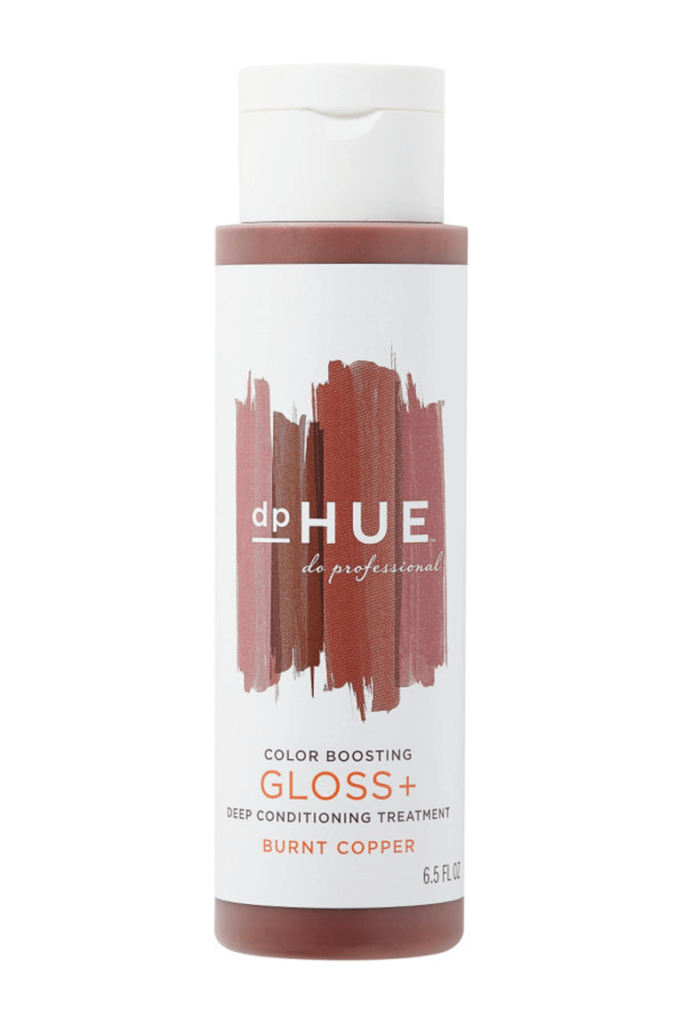
We love this natural dye/gloss by DpHue. Their color range covers all of the basics: brown, copper, black, blonde, light blonde and even “strawberry”.
The formula dyes and conditions simultaneously. The result is sensational shine and hydration along with your semi-permanent hair color. No parabens, ammonia or hydrogen peroxide in sight.
4. Schwarzkopf Simply Color Permanent Hair Color
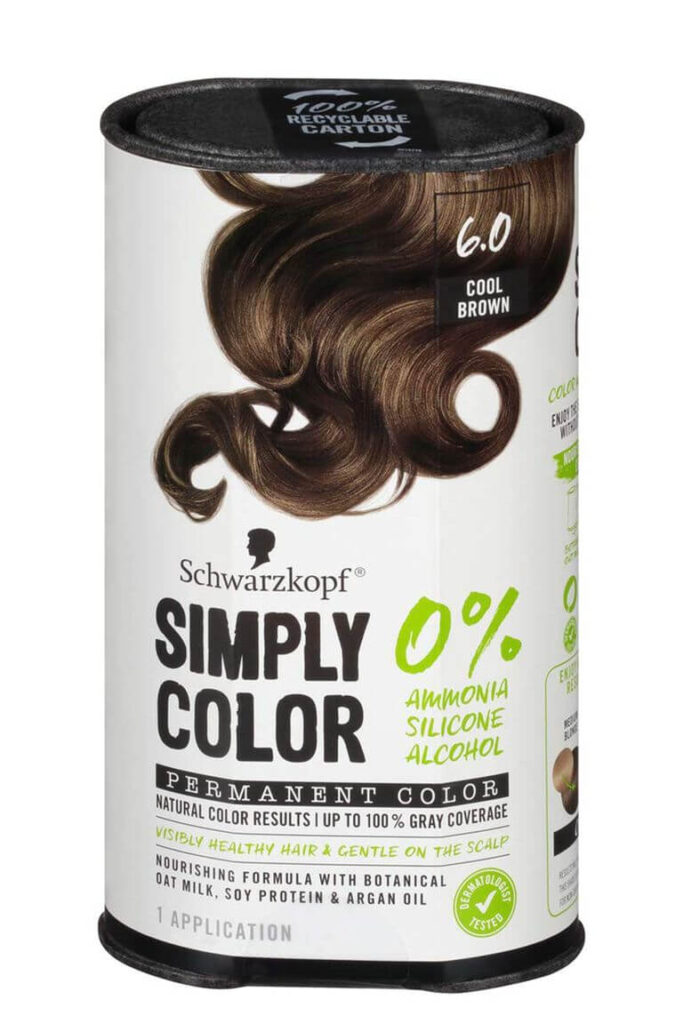
Schwarzkopf is a brand that many people have looked to to pave the way for more natural approaches within the hair dye industry. They answered with their Simply Color range which is totally free of ammonia, silicone and alcohol.
Argan oil, milk from oats and soy proteins are their key ingredient compound. There are 12 shades on a broad spectrum. This is the most potent natural gray hair dye, with Schwarzkopf boasting 100% coverage over gray hairs.
5. Manic Panic Amplified Semi-Permanent Hair Color

If you grew up in the 90s or 2000s, you probably remember the initial emergence of Manic Panic on the hair-care scene. Bold, bright, unusual hair colors were all the rage; no pink was too bright, no green to strange.
The selling point of Manic Panic was that they set themselves up as strictly vegan from the get go. No harmful ingredients in the formula, nor harmful treatment on animals in testing phases.
Those looking for organic hair color in all the colors of the rainbow need only invest in one of these. How many shades of blue does one brand need? Manic Panic has around 10!
6. Klorane Sun Lightening Spray
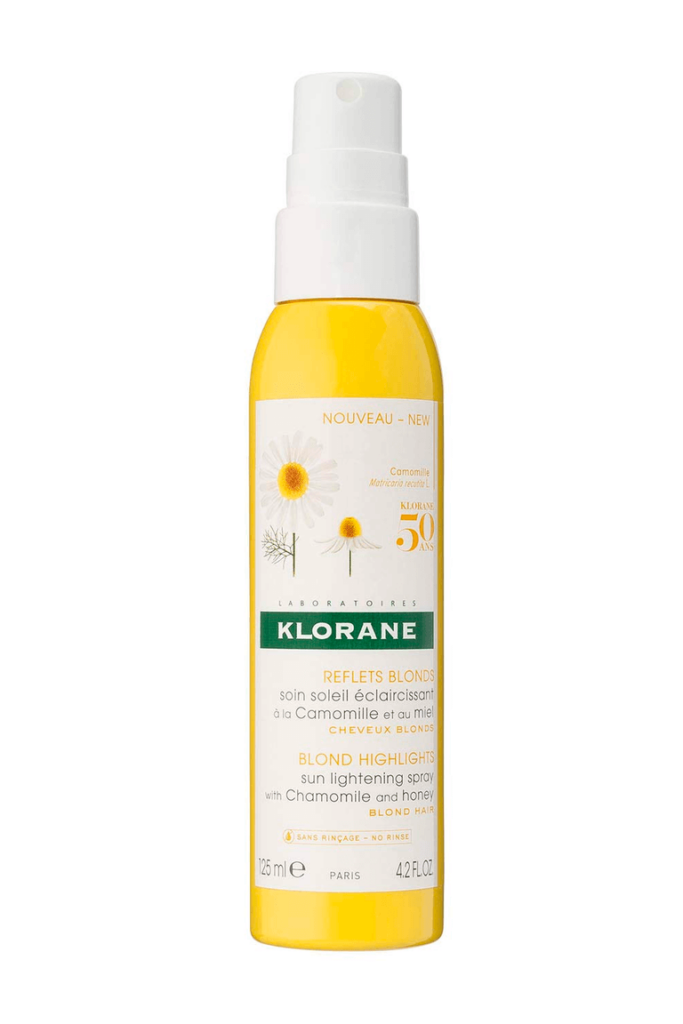
If you’re looking for a more gentle way to achieve naturally lighter hair, then a lightening spray is probably the go-to.
People have been naturally lightening their hair for years using age-old techniques such as coating the hair in lemon juice and sitting in the sun, or using Chamomile tea as a lightening agent.
Klorane’s lightning spray embodies the latter. The Chamomile and honey formula need only be sprayed into damp hair in order to work its magic. This is a wonderful way for dark blondes to get that bleached look, without using harmful peroxide to do so.
7. Revlon Total Color Permanent Hair Color
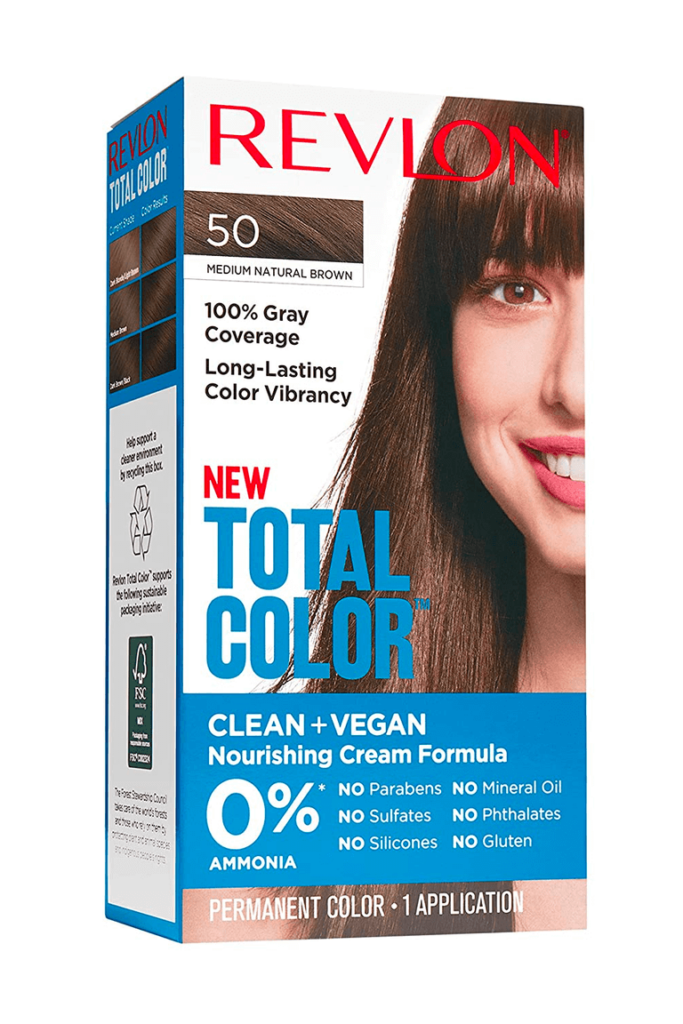
While we will always promote supporting small businesses when it comes to beauty and self-care, we also believe in giving credit where it is due.
Revlon took the natural hair dye game to a new level when they totally reformed their formulas for their Total Color range. Their clean and vegan product contains no ammonia, parabens, mineral oils, gluten, phthalates, sulfates or silicones.
8. Zenia Pure Henna Powder
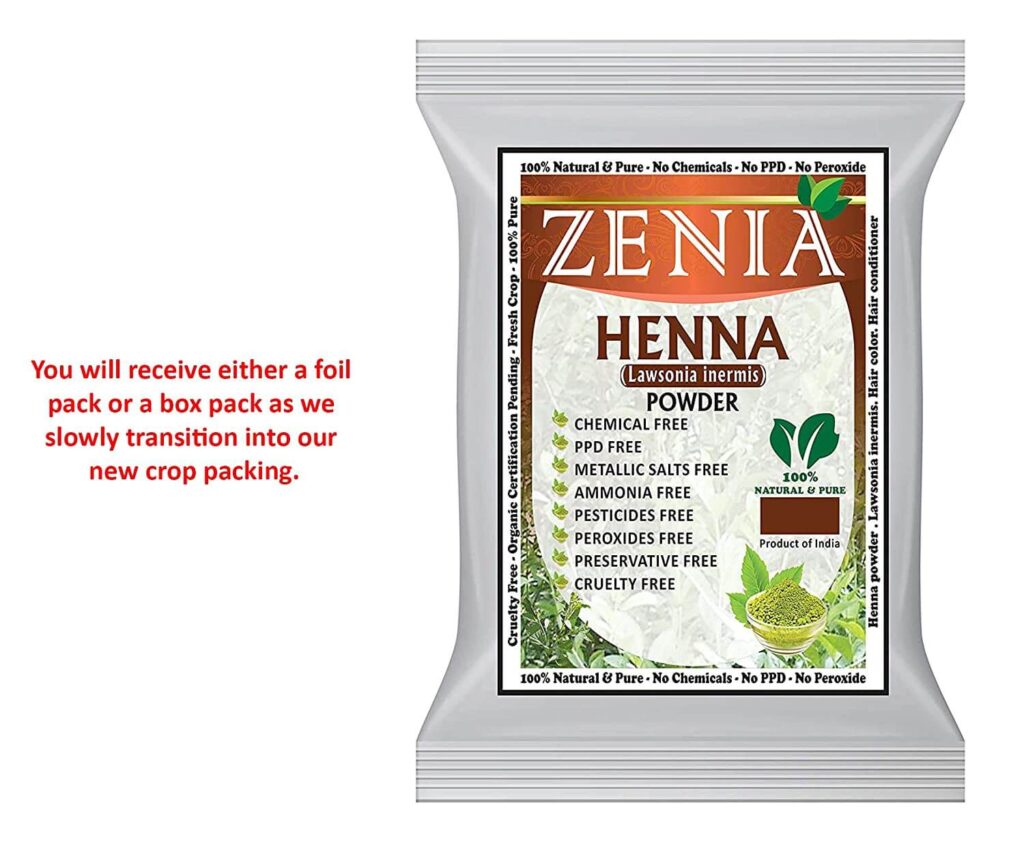
Since henna comes from a tree, it too can be full of pesticides if it is not grown organically.
Zenia’s pack of raw henna makes for a potent organic hair dye that also happens to be vegan. Zenia does not allow any pesticides to be used in the farming process, leaving us with some of the most pure henna on the market.
Intended for overall hair coverage, Zenia’s henna leaves a warm, coppery finish on most individuals. It’s a very natural looking dye with an even finish — this is important when using henna.
If you’re looking for how to color hair at home naturally while also supporting small business, this is it.
9. Kangana Black

Henna isn’t only for individuals looking for warm copper tones and auburn browns. Some henna can be manipulated to dye hair jet black.
Kangana’s henna does just that. It is mixed with a range of different plant powders in order to give off a much darker hue than its copper counterparts. It also works to hydrate and nourish the hair while embedding the dye; you’ll feel and see a tangible difference after washing it out.
DIY: Make Natural Hair Dye at Home
One of the best things about making the shift to a more natural beauty regime is that you end up being able to make some, or all, of your beauty products at home.
Botanical ingredients are more abundant than we may realize; even products as basic as coconut oil or cocoa powder, found in most pantries, can be used to make homemade lip gloss (J add links), dry shampoo and even face creams.
DIY hair day is equally as easy to make in the home provided that you know what ingredients work to manipulate color in hair follicles. Who knew one could dye hair with coffee?
Read on for some recipes where we’ll teach you exactly how to cover grey hair with coffee, and even how to make red hair dye with household items.
DIY Coffee Hair Dye for Dark Hair
Ingredients:
- 1/2 cup of strong brew coffee
- 2 tbsp fresh coffee grounds
- 1 cup natural leave-in conditioner of your choosing
Preparation and Use:
- For this recipe, you’re aiming for a coffee hair dye paste when it comes to texture.
- First, brew your 1/2 cup of strong coffee.
- In a bowl, mix the brewed coffee and coffee grounds into the conditioner.
- Use your hands to coat the mixture into your clean, damp hair and let it sit for 60 or 90 minutes, depending on de sired shade.
- Rinse using only warm water. There is no need to condition as the mixture was conditioner based already.
DIY Coffee and Coconut Oil Hair Dye (Not Vegan)
Ingredients:
- 2 tbsp Greek Yoghurt
- 1 tsp Castor Oil
- 3 tsp Virgin Coconut Oil
- 3 tbsp Instant Coffee Powder
Preparation and Use:
- Use a blender to mix the castor oil into the coconut oil.
- Add the coffee and blend until smooth.
- Add the yoghurt and mix well.
- Part your hair and apply the mixture from the scalp through to the rest of the hair.
- Leave in for 2 hours.
- Wash out with shampoo and conditioner as usual.
DIY Beet Juice Hair Dye for Red Hair
Ingredients:
- 1/2 cup coconut oil
- 1/2 cup fresh beet juice
Preparation and Use:
- Blend the ingredients together until thick and smooth, but not melted.
- Apply all over the hair and leave in for 1 hour.
- Wash it out with shampoo and conditioner.
DIY Sage Hair Dye to Cover Grays
Ingredients:
- 1 cup dried sage
- 4 cups of boiling water
Preparation and Use:
- Steep the dried sage in the boiling water for 30 minutes minimum. The longer it steeps, the darker the color you will achieve.
- Let it cool and take all of the sage leaves out.
- Wash and towel dry your hair.
- Whilst standing in the shower, pour the mixture over your hair slowly and evenly.
- Allow to develop for 15-30 minutes before washing it out with shampoo and conditioner.
Did You Enjoy This Article?
If you enjoyed this article, you might also like our articles discussing natural hair products such as Top 35 CBD Hair Products, Top 18 Natural Shampoo and Conditioner, and Top 11 Natural Dry Shampoo.

